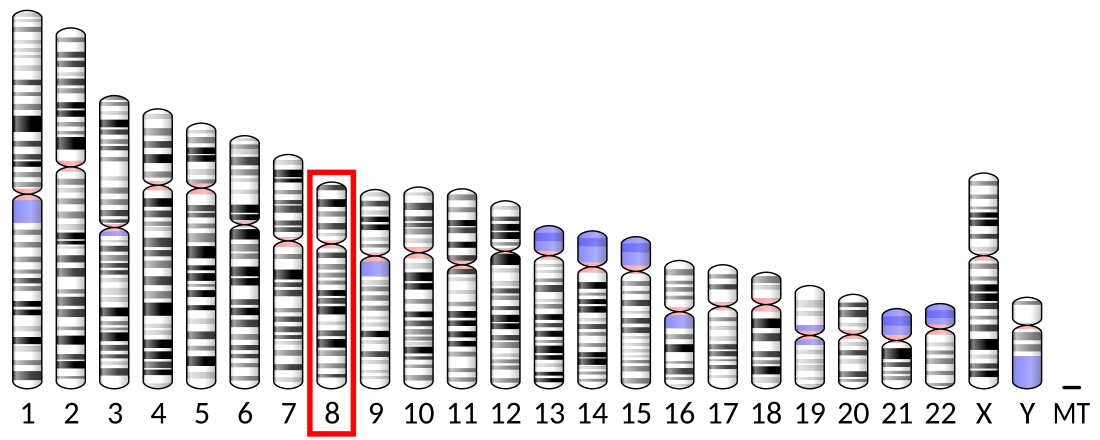Top Qs
Timeline
Chat
Perspective
SNAI2
Protein From Wikipedia, the free encyclopedia
Remove ads
Zinc finger protein SNAI2 (also called SLUG) is a transcription factor that in humans is encoded by the SNAI2 gene. It promotes epithelial to mesenchymal transition, differentiation (e.g. in gastrulation), and migration of cells.[5][6][7]
Remove ads
Function
This gene encodes a member of the Snail superfamily of Cys2His2-type zinc finger transcription factors. The encoded protein acts as a transcriptional repressor that binds to E-box motifs and is also likely to repress E-cadherin transcription in breast carcinoma. This protein is involved in epithelial-mesenchymal transitions and has antiapoptotic activity. It regulates differentiation and migration of neural crest cells along with other genes (e.g. FOXD3, SOX9 and SOX10, BMPs) in embryonic life. Mutations in this gene may be associated with sporadic cases of neural tube defects.[7][8]
SNAI2 downregulates expression of E-cadherin in premigratory neural crest cells; thus, SNAI2 induces tightly bound epithelial cells to break into a loose mesenchymal phenotype, allowing gastrulation of mesoderm in the developing embryo.[9][10] Structurally similar to anti-apoptotic Ces-1 in C. elegans, SLUG is a negative regulator of productive cell death in the developing embryo and adults.[9][11]
Remove ads
Clinical significance
Widely expressed in human tissues, SLUG is most notably absent in peripheral blood leukocytes, adult liver, and both fetal and adult brain tissues.[11] SLUG plays a role in breast carcinoma as well as leukemia by downregulation of E-cadherin, which supports mesenchymal phenotype by shifting expression from a Type I to Type II cadherin profile.[11][12] Maintenance of mesenchymal phenotype enables metastasis of tumor cells, though SLUG is expressed in carcinomas regardless to invasiveness.[9][10][11] A knockout model using chick embryos has also showed inhibition of mesodermal and neural crest delamination; chick embryo Slug gain of function appears to increase neural crest production.[9] Mutations in Slug are associated with loss of pregnancy during gastrulation in some animals.[9]
Remove ads
Interactions
Bone morphogenetic proteins (BMPs) precede expression of SLUG and are suspected as the immediate upstream inducers of gene expression.[10][13]
Snail2 and PRC2 in Neural Crest Development
Summarize
Perspective
During early vertebrate development, SLUG partners with the Polycomb repressive complex 2 (PRC2) to regulate the formation and migration of neural crest cells, a group of cells that contribute to facial structures, nerves, and pigment cells. PRC2, made up of EZH2, EED, and SUZ12, modifies chromatin to silence genes by adding repressive histone marks (H3K27me3). These components are actively expressed in neural and neural crest tissues and are essential for normal development in these regions.[14]
Experiments showed that loss of EZH2 leads to reduced expression of important neural crest genes such as Snail2, Sox9, and Sox10, impaired cell migration, and craniofacial defects. The researchers also found that Snail2 physically interacts with EZH2, helping to guide PRC2 to specific target genes.[14]
One key target is E-cadherin, a gene that must be repressed for neural crest cells to undergo epithelial-to-mesenchymal transition (EMT) and migrate. Snail2 and EZH2 were shown to co-bind the E-cadherin promoter, and without EZH2, Snail2 could not silence the gene effectively. This results in failed EMT and reduced cell movement.[14]
Together, these findings show that Snail2 relies on PRC2 not just to repress target genes, but to carry out the complex choreography of neural crest development.
Remove ads
References
Further reading
Wikiwand - on
Seamless Wikipedia browsing. On steroids.
Remove ads





